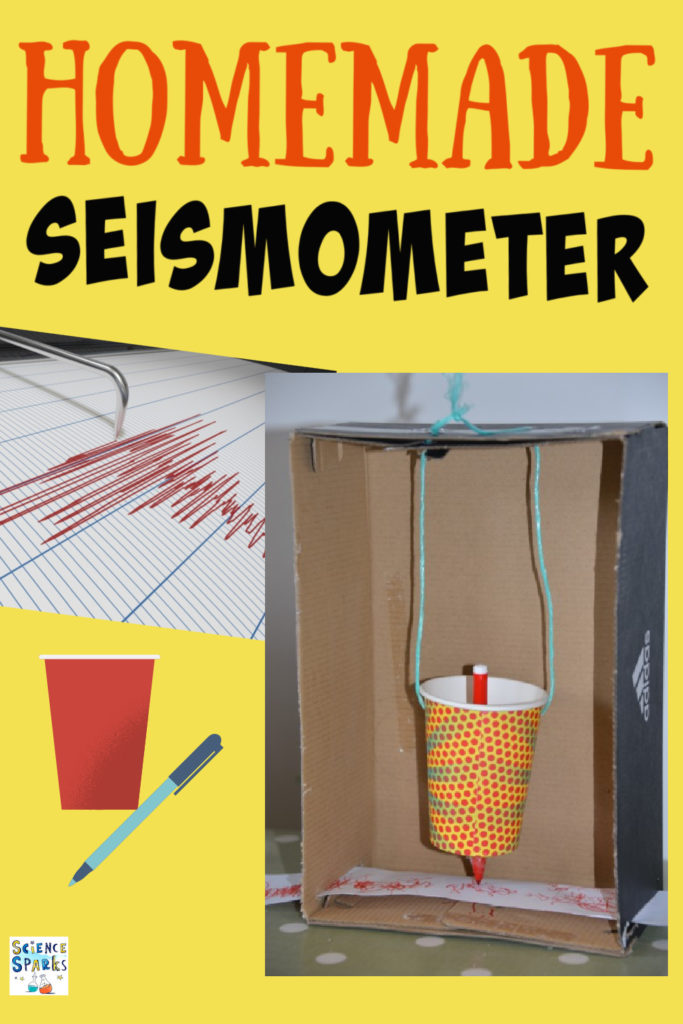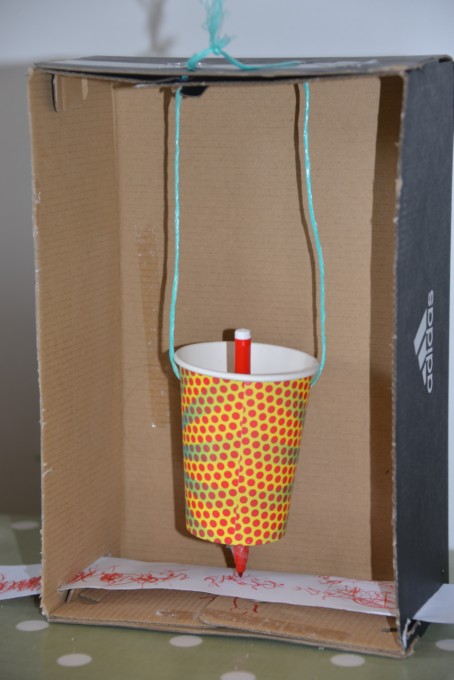Earthquakes occur when parts of the Earth’s crust and upper mantle move suddenly. Large earthquakes can cause catastrophic amounts of damage so it’s very important to be able to predict when they might happen.
Earthquakes are detected using a seismometer which detects vibrations in the earth. We’ve made a very simple model of a seismometer to demonstrate how they work.
How to make a seismometer model
Materials
Shoebox
Paper or plastic cup
Pencil or felt tip
Scissors
String
Sellotape
Long paper
Seismometer Instructions
Carefully make two holes in the top of the box, ask a grown up to help with this part.
Next, make another hole in the centre of the bottom of the plastic or paper cup and two holes on either side of the top of the cup.
Push your pen or pencil through the bottom hole and make sure it’s secure. Just a couple of cm of the pen should be poking through the bottom.
Thread your string through the two holes in the cup and then through the holes in the box and tie securely. The cup should be dangling down inside the box. You need to tie the string so the pen rests on the bottom of the box.
Carefully make a slit on either side of the bottom of the box and cut a length of paper that will pass through the slits.
Thread the paper through the slits.
Place your seismometer on a flat surface and ask a friend to shake the box while you pull the paper.
You should see a wiggly line on the paper. The more you shake the box the wider the lines will be.
Try making different types of movements to see how they change the line created.
More Earthquake Science
Test foundations made from different materials with this easy investigation.
Learn about plate tectonics with an orange.





Last Updated on April 23, 2021 by Emma Vanstone


Very helpful and interesting